Top - N Analysis Report
Using the Top-N Analysis Report offered by eG Enterprise, administrators can rank components/descriptors for every metric collected by the eG Enterprise. The report also reveals the best/worst players in a particular performance area, thereby bringing to light components that are problem-prone, and which hence require continuous attention.
For example, to view the top 10 components with incoming traffic flow and outgoing traffic flow, do the following:
-
Select the Top–N Analysis option from the Analytical Reports node of the REPORTS BY FUNCTION tree.

Figure 1 : Selecting the Test, Measure, and Descriptors to be compared
- Next, choose between the Metrics and Test options from the Select by Criteria list. If you select the Test option, you will be expected to select a Test, then the Measure for which a Top-N list is to be generated, and finally, the Descritpors in the infrastructure that will be participating in the evaluation. In the case of our example therefore, you will first have to select Network Traffic test, then choose the Incoming traffic measure, and finally select one/more Descritpors displayed in the Descriptors list (see Figure 1). If the Descriptors list consists of too many descriptors, then viewing all the descriptors and selecting the ones you need for report generation could require endless scrolling. To avoid this, you can click the
 button next to the Descriptors list. A DESCRIPTORS pop up window will then appear using which you can view almost all the descriptors in a single interface and Select the ones to be included in the top-n analysis easily.
button next to the Descriptors list. A DESCRIPTORS pop up window will then appear using which you can view almost all the descriptors in a single interface and Select the ones to be included in the top-n analysis easily. -
Clicking the Add button will enable you to choose the components for which you wish to generate the report as shown in Figure 2. Once you click the Add button, your selection will be listed in a separate section as shown in Figure 2. If you wish to hide this selection, you can do so by clicking the
 icon. Similarly, if you wish to view the selection section at a later point of time, you can do so by clicking the
icon. Similarly, if you wish to view the selection section at a later point of time, you can do so by clicking the  icon. You can add any number of Tests and Measures to generate this report by following the procedure mentioned in step 2.
icon. You can add any number of Tests and Measures to generate this report by following the procedure mentioned in step 2.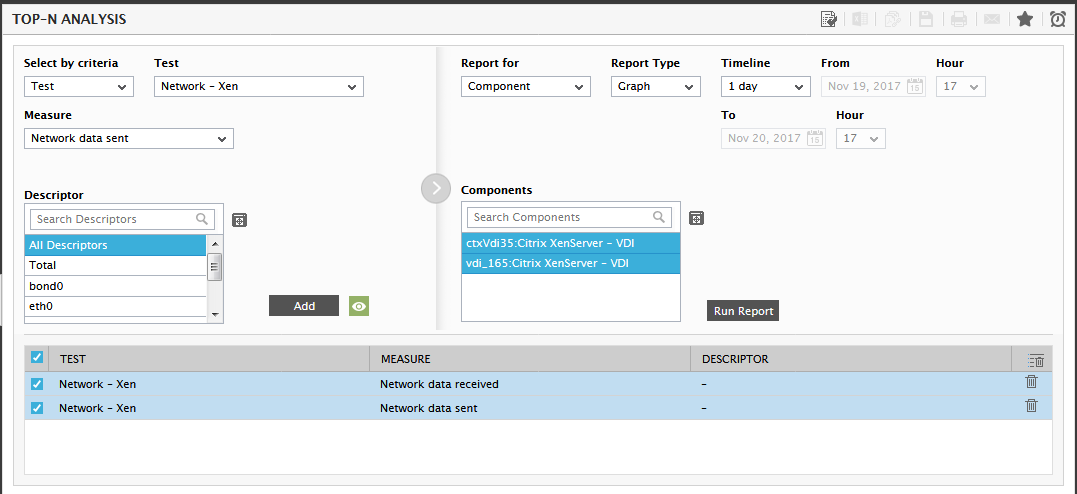
- On the other hand, the Metrics option, if chosen from the Select by Criteria list, offers pre-defined test/measure combinations. When this option is chosen, you will see a pre-configured list of metrics displayed. Instead of selecting a specific Test and Measure as required by the Test option, you can simply select a performance parameter from the Metrics list, and then pick the components from which the Top-N Components need to be identified.
-
By default, the Metrics list comes with a set of pre-configured parameters. You can expand the Metrics list by adding more performance parameters to it. To override the default Metrics list, edit the eg_report.ini file (in the <eg_install_dir>\manager\config directory), and add a new metric to the [report_templates] section therein, in the following format:
<DisplayName>=<InternalTestName>:<InternalMeasureName>
For example, if you wish to add the Data in flow measure of the Net Flows test, do the following:
-
First, determine the Internal name of the test and measure to be configured. For that, do the following:
- Open the eg_lang*.ini file (from the <eg_install_dir>\manager\config directory), where * is the language code that represents the language preference that you have set using the user profile page. In this file, the component types, measure names, test names, layer names, measure descriptions, and a wide range of other display information are expressed in a particular language, and are mapped to their eG equivalents.
- Now, search the eg_lang*.ini file for the test name of interest to you. In the case of our example, search for “Net Flows”.
- Once it is found, determine which internal eG test it is mapped to. For instance, the eG equivalent of the “Net Flows” test is “NetFlowTest".
- Similarly, you can also find the internal measure name that eG Enterprise uses for referring to the Data in flow measure; this will be Total_Flow_Data.
-
Now that the eG internal names have been identified, proceed to configure the metric in the following manner:
Net flow=NetFlowTest: Total_Flow_Data
The DisplayName, Net flow, will be added to the Metrics list of Figure 2.
-
- As our example seeks to determine the top incoming network traffic/top outgoing network traffic consuming customers from across all components in the infrastructure, select Component from the Report for list.
-
Next, select a filter criterion from the Report for list box. In large environments comprising of hundreds of components, users often find it difficult to choose a few specific components from the endless component list, for drawing performance comparisons. Therefore, to enable users to quickly and easily pick the components to be compared, the Report for list box provides users with multiple filter options. Selecting an option from this list provides users with a smaller component window to choose from. The options provided by the Report for list box are discussed hereunder:
- Component: Select this option to choose the components for comparison from across all the managed components in the environment
- Service: Select this option if the components to be compared are involved in the delivery of a business service. Then, pick the Service.
- Segment: Choose this option if the components to be compared are part of a segment. Then, select the Segment.
- Zone: Pick this option to compare the performance of components that are included in one/more zones. Then, by selecting an option from the Include Subzones list, indicate whether the Components list should include components in the sub-zones of the chosen zone as well.
- Next, choose a Report Type (Graph or Data). The default Report Type is Graph. A Graph report graphically represents the measure data.
-
Then, specify the Timeline for the graph. You can either provide a fixed time line such as 1 hour, 2 days, etc., or select the Any option from the list to provide a From and To date/time for report generation.
Note:
For every user registered with the eG Enterprise system, the administrator can indicate the maximum timeline for which that user can generate a report. Once the maximum timeline is set for a user, then, whenever that user logs into eG Reporter and attempts to generate a report, the Timeline list box in the report page will display options according to the maximum timeline setting of that user. For instance, if a user can generate a report for a maximum period of 3 days only, then 3 days will be the highest option displayed in the Timeline list - i.e., 3 days will be the last option in the fixed Timeline list. Similarly, if the user chooses the Any option from the Timeline list and proceeds to provide a start date and end date for report generation using the From and To specifications, eG Enterprise will first check if the user's Timeline specification conforms to his/her maximum timeline setting. If not, report generation will fail. For instance, for a user who is allowed to generate reports spanning over a maximum period of 3 days only, the difference between the From and To dates should never be over 3 days. If it is, then, upon clicking the Run Report button a message box will appear, prompting the user to change the From and To specification.
- Next select the Components for which you wish to generate the top n analysis report. If the Components list consists of too many components, then viewing all the components and selecting the ones you need for report generation could require endless scrolling. To avoid this, you can click the
 button next to the Components list. A COMPONENTS pop up window will then appear using which you can view almost all the components in a single interface and Select the ones to be included in the top-n analysis easily.
button next to the Components list. A COMPONENTS pop up window will then appear using which you can view almost all the components in a single interface and Select the ones to be included in the top-n analysis easily. -
In addition to the settings discussed above, this report comes with a set of default specifications. These settings are hidden by default. If you do not want to disturb these default settings, then you can proceed to generate the report by clicking the Run Report button soon after you pick an option from the Components list. However, if you want to view and then alter these settings (if required), click on the
 button. The default settings will then appear in the MORE OPTIONS drop down window. The steps below discuss each of these settings and how they can be customized.
button. The default settings will then appear in the MORE OPTIONS drop down window. The steps below discuss each of these settings and how they can be customized. 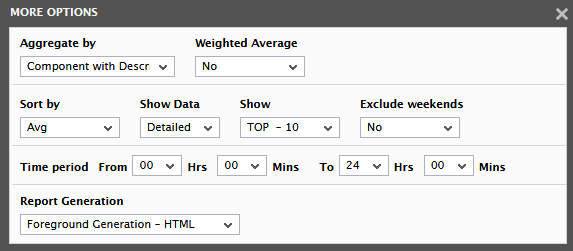
Figure 3 : The default settings for generating a Top – N Analysis report
- By default, this report would be generated for a combination of Component:Descriptor for the chosen test. Therefore, the Component with Descriptor option is chosen by default from the Aggregate by list. If you wish to generate the Top - N Analysis report for a chosen component of the test alone irrespective of the descriptors of the test, then, choose the Component option from this list. If you wish to consider the descriptors of a chosen test for generating the Top - N Analysis report, choose the Descriptors option from this list.
-
The speed with which a report is generated depends primarily on the report Timeline. While a Timeline that varies between a couple of days to a week enables the eG Enterprise system to quickly retrieve the required data, timelines that span multiple weeks/months could slow-down the data retrieval and report generation process to a considerable extent, owing to the volume of data involved. In order to ensure quick and easy access to reports, eG Enterprise provides you the option of enabling data retrieval from the Trend information in the database, instead of the Detailed test information that is used by default for report generation. The Detailed test information based comprises of multiple measurement records for a test - one or more each for every test execution. Whereas, the Trend information includes only hourly, daily, and monthly summary computations for a test performed on a continuous basis. For instance, during a period of 1 hour, a test that runs every 5 minutes inserts atleast 12 records into the Detailed test information base. On the other hand, the Trend information base would consist of only 1 record for the same 1 hour period. Fewer the number of records, query execution becomes much quicker, and data retrieval faster. To use the trend data for report generation, you will have to select the Trend option from the Show Data field in Figure 3. By default, the Detailed option is selected in Figure 3 indicating that the report data is retrieved from the detailed test information in the database. If need be, you can also ensure that all reports always use the Detailed test tables alone by hiding the Show Data field from the reporter interface. To achieve this, do the following:
- Login to the eG administrative interface as 'admin'.
- Select the Manager option from the Settings tile that appears when the
 button against the Admin tab is clicked.
button against the Admin tab is clicked. -
From the GENERAL SETTINGS page that then appears, if you set the Compute average/sum of metrics while trending flag to No, then the Show Data field will not appear in the reporter interface; this denies users access to the Trend option, and thus ensures that reports are always generated using the Detailed tables.
Note:
- A Trend report will not include the data for the current day since trend data is only computed at the end of the day.
- If the Trend option is chosen, the time period of the report should be greater than 1 day.
-
The usage of Detailed test tables for generating reports, especially those that span weeks, increases the stress on the eG database, thus resulting in undue delays in report generation. In order to ensure that the database is not choked by such voluminous data requests, you can configure eG Enterprise to automatically "force" the use of the Trend option if the Timeline of a report exceeds a pre-configured duration. To specify this time boundary, do the following:
- Edit the eg_report.ini file in the <EG_INSTALL_DIR>\manager\config directory.
- In the [MISC] section of the file, you will find a DetailedTime parameter.
- Specify the duration (in days) beyond which Detailed reports cannot be generated, against the DetailedTime parameter, and save the eg_report.ini file.
- For instance, to make sure that Detailed reports are disallowed for a Timeline of over 2 weeks, set the DetailedTime parameter to 14 and save the file.
- Say, subsequently, you attempt to generate a Detailed report for a Fixed Timeline of 3 weeks (which is greater than the 14-day limit set in our example). The instant you select the 3 weeks option from the Fixed list box, the Detailed option gets automatically disabled, and the Trend option gets enabled. Similarly, if you specify an Any Timeline that runs over 14 days, then, upon clicking the Run Report button to generate the report, a message box appears informing you that only the Trend option is permitted.
- To proceed with the Trend report generation, click the OK button in the message box. To terminate Trend report generation, click the Cancel button.
-
Using the Weighted Average flag, you can indicate how the Avg value is to be computed for a chosen measure for the purpose of this report. The status of the Weighted Average flag is relevant only if the Test chosen is a descriptor-based test, and the descriptors are dynamic in nature. For instance, the Net flows test in our example auto-discovers the net flows that are currently active on a Cisco router. For each net flow (i.e., source IP - destination IP pair) so discovered, the test reports a variety of statistics. Unlike descriptors such as disk partitions or processors that rarely change, the net flows are dynamic descriptors, which may change often; in other words, a net flow that is active on the network now, may not communicate at all during the next measurement period. The Net flows test will neither report metrics for the inactive descriptors nor display it in the eG monitoring console. This is why, net flows are considered 'dynamic descriptors'.
By default, the top-n Analysisreport compares the Avg value of the chosen measure across all selected descriptors. Since the Weighted Average flag is set to No by default, this Avg is computed as the ratio of the sum total of the measure values reported by a descriptor during the given timeline and the total number of times the test ran during the same timeline. In case of dynamic descriptors however, the Avg values so computed may not reveal the 'true picture of performance'. This is because, the test may not discover or report metrics for dynamic descriptors throughout a given timeline. For example, take the case of the Net flows test. Say, the test auto-discovered two net flows - namely, 'A' and 'B' - during its first measurement period; both net flows registered a Data in Flow of 3 MB and 8 MB respectively. Assume that the second time the Net flows test ran, it captured 5 MB of data in net flow 'A'. Net flow 'B' however was inactive during the second measurement period, and hence, was not discovered at all. If the Weighted Average flag is set to No by default, then, the top-n report will plot the Avg value of 4 MB (3+5=8/2=4) for net flow 'A' and 4 MB (8/2=4) again for net flow 'B'. If you notice, unlike net flow 'A', where 8 MB of data was transacted over a period of time, in case of net flow 'B', 8 MB of data was transacted at one shot! Logically therefore, net flow 'B' has to be ranked above net flow 'A' in terms of data in flow. However, since the default Avg value computation does not clearly bring out this difference, both net flow 'A' and 'B' are treated at par in the top-n report! This is why, in case of dynamic descriptors, you may want to set the Weighted Average flag to Yes. In this case, the eG Enterprise system expresses Avg as the ratio of the sum total of the measure values reported by a descriptor during a given timeline and the 'total number of times that descriptor was active' during the same timeline. This implies that if the Weighted Average flag is set to Yes in the net flow example above, the Avg value for net flow 'A' will continue to be 4 (3+5=8/2=4), but the same for net flow 'B' will be 8 MB (8/1=8). In the top-n report therefore, net flow 'B' will be placed above net flow 'A', thereby accurately pointing you to the top communicators over the network.
- To exclude weekends (Saturdays and Sundays) from the period of consideration, select the Yes option against Exclude weekends.
-
To view the Top-10 components, select Top-10 from the Show list. By default, the Top-<maximum number of active components for the test> will be the option chosen here - i.e., if this test takes a maximum of 5 components, then the Top-5 option will be selected here by default.
Note:
The options to be listed in the Show list can be configured in the eg_report.ini file in the <EG_INSTALL_DIR>\manager\config directory. To achieve this, set the ShowTop parameter in the [infos] section of this list to a specific numeric value. For example, if you set ShowTop to 10, then the Show list will display the following options: Top-10, Top-2, Top-5, Last-10, Last-2, and Last-5.
- Then, select an option from the Sort by list. The Avg, Min, and Max options are listed here. For the purpose of our example, select the Avg option, so that the Top-10 network traffic consumers are arrived at based on their average network consumption during the specified Timeline.
- Next, specify the report duration against Time period.
- Finally, click the Run Report button to generate the report.
-
In large environments, reports generated using months of data can take a long time to complete. Administrators now have the option of generating reports on-line or in the background. When a report is scheduled for background generation, administrators can proceed with their other monitoring, diagnosis, and reporting tasks, while the eG manager is processing the report. This saves the administrator valuable time. To schedule background processing of a report, select the Background Save - PDF option from the Report Generation list. In this case, a Report Name text box will appear, where you would have to provide the name with which the report is to be saved in the background. To process reports in the foreground, select the Foreground Generation - HTML option from this list.
Note:
- The Report Generation list will appear only if the EnableBackgroundReport flag in the [BACKGROUND_PROCESS] section of the eg_report.ini file (in the {EG_INSTALL_DIR}\manager\config directory) is set to Yes.
- The default selection in the Report Generation list will change according to the Timeline specified for the report. If the Timeline set is greater than or equal to the number of days specified against the MinDurationForReport parameter in the [BACKGROUND_PROCESS] section of the eg_report.ini file, then the default selection in the Report Generation list will be Background. On the other hand, if the Timeline set for the report is lesser than the value of the MinDurationForReport parameter, then the default selection in the Report Generation list will be Foreground. This is because, the MinDurationForReport setting governs when reports are to be processed in the background. By default, this parameter is set to 2 weeks - this indicates that by default, reports with a timeline of 2 weeks and above will be processed in the background.
-
In the case of our example, if the Report Type is Graph and the option chosen from the Report Generation list is Foreground Generation - HTML, then, clicking on the Run Report button will invoke a bar chart depicting the Top-10 consumers of incoming traffic, and the average Data in the incoming traffic flow (see Figure 4). If the Weighted Average flag is set to Yes, then for the dynamic net flow descriptors, this average will be calculated as the ratio of the sum total of the values reported by the Data in flow measure for a net flow during the given timeline and the total number of times that net flow was active on the network during the same timeline.
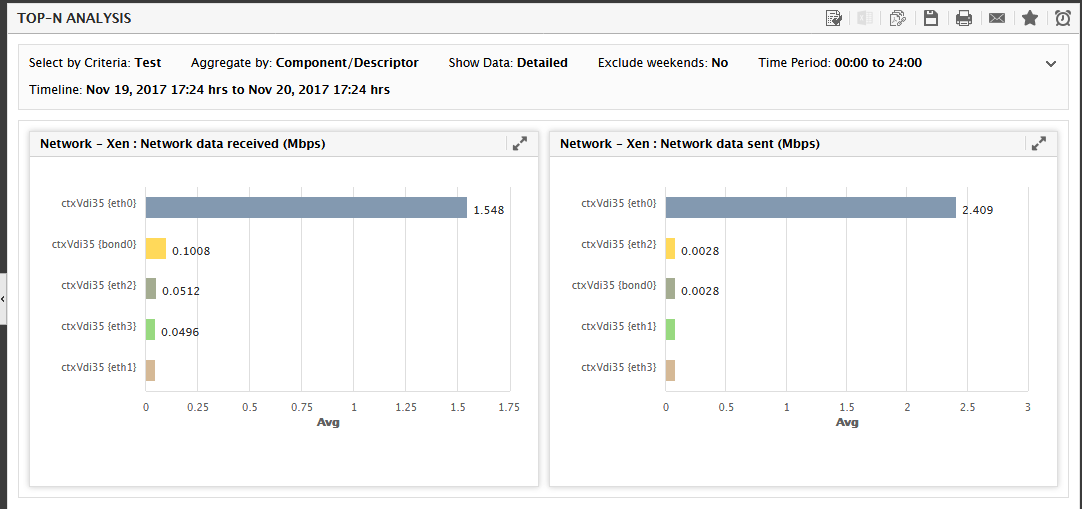
Figure 4 : A Top N Graph Report where the Weighted Average flag is set to 'Yes'
-
If the Weighted Average flag is set to No on the other hand, then for the dynamic descriptors, this average will be calculated as the ratio of the sum total of the values reported by the Data in flow measure for a net flow during the given timeline and the total number of times the Net flows test ran during the same time line (see Figure 5).
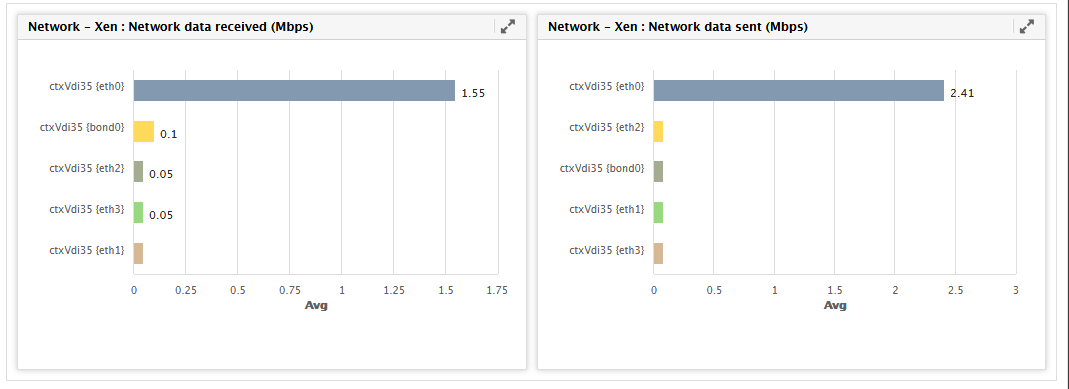
Figure 5 : The Top-N Graph report where the Weighted Average flag is set to 'No'
-
In a Data report, on the other hand, the configured details are presented in a tabular format. Therefore, if the Report Type is Data, then a report that lists the minimum, maximum, and average values for the Top-10 net flows on the chosen router will appear (see Figure 6).
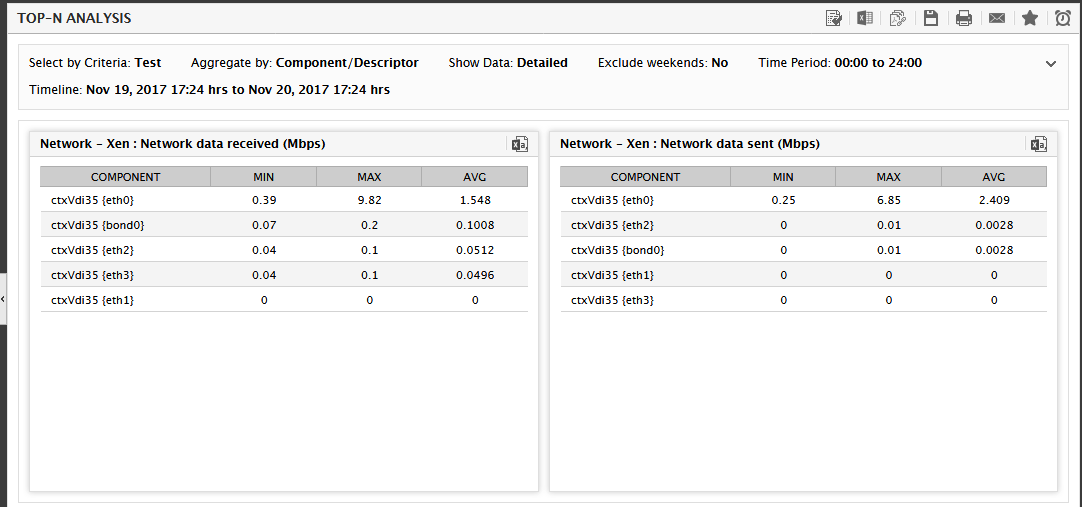
Figure 6 : A Top N Data Report where the Weighted Average flag is set to 'Yes'
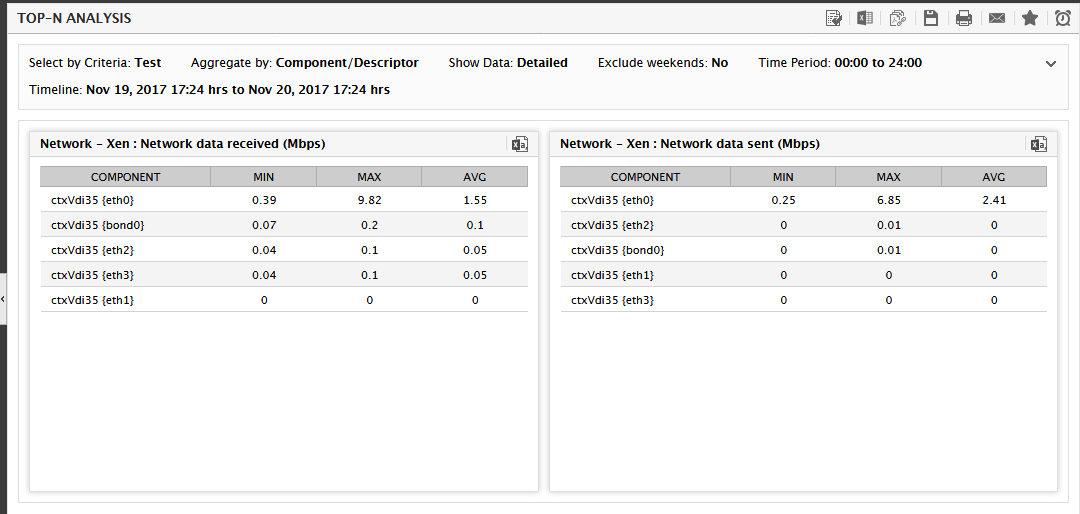
Figure 7 : A Top N Data Report where the Weighted Average flag is set to 'No'
-
In a Graph report, if you have chosen the Component option from the Aggregate by list, then, the report will be displayed as shown in Figure 8.
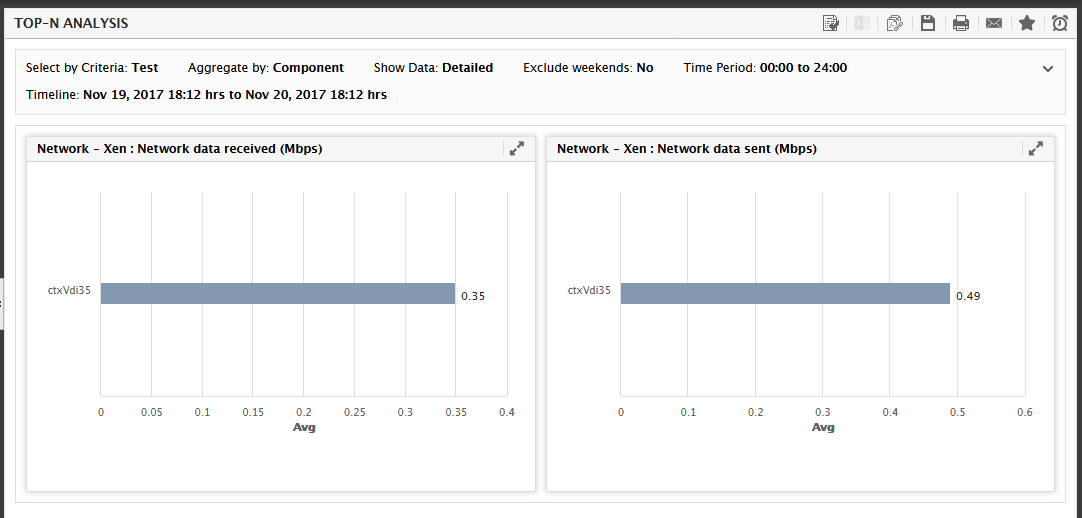
Figure 8 : The Top N Analysis report generated when Component option is chosen from the Aggregate by list
-
In a Data report, if you have chosen Descriptor option from the Aggregate by list, then, the report will be generated fro the descriptors of the chosen component alone as shown in Figure 9.
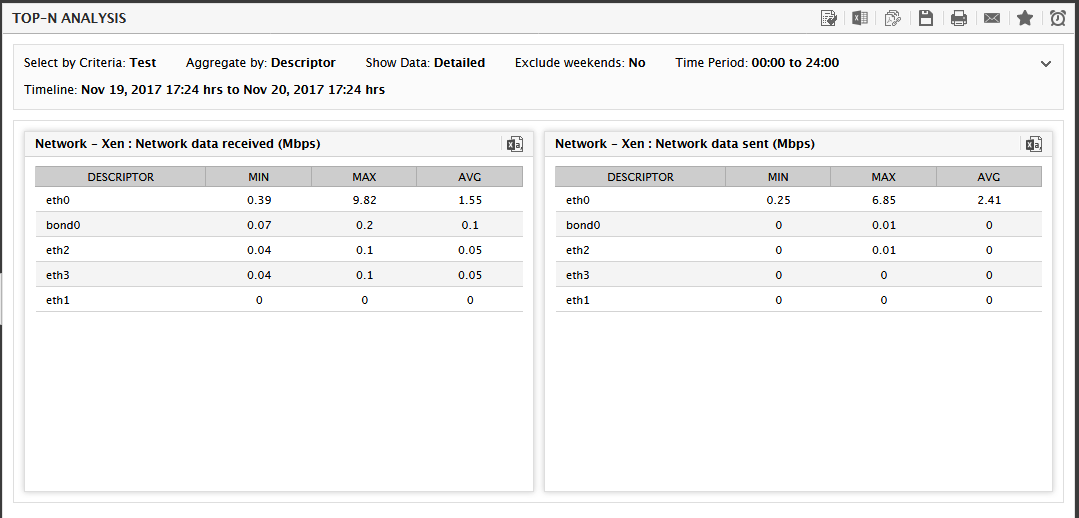
Figure 9 : The Top N analysis reported generated when Descriptor option is chosen from the Aggregate by list
- On the other hand, if the Background Save - PDF option is chosen from the Report Generation list, then clicking on the Run Report button will not generate the report and display it in this page for your benefit. Instead, a message indicating that the report is being processed in the background will appear. This will be accompanied by a link that will lead you to the page that lists all the reports that are being processed in the background, and their current status. If background report generation fails for a report, you can regenerate that report using this page, or can even delete that report if need be. On the other hand, if background processing successfully completes for your report, then, you can view a PDF of the report by clicking on the PDF icon in that page.
